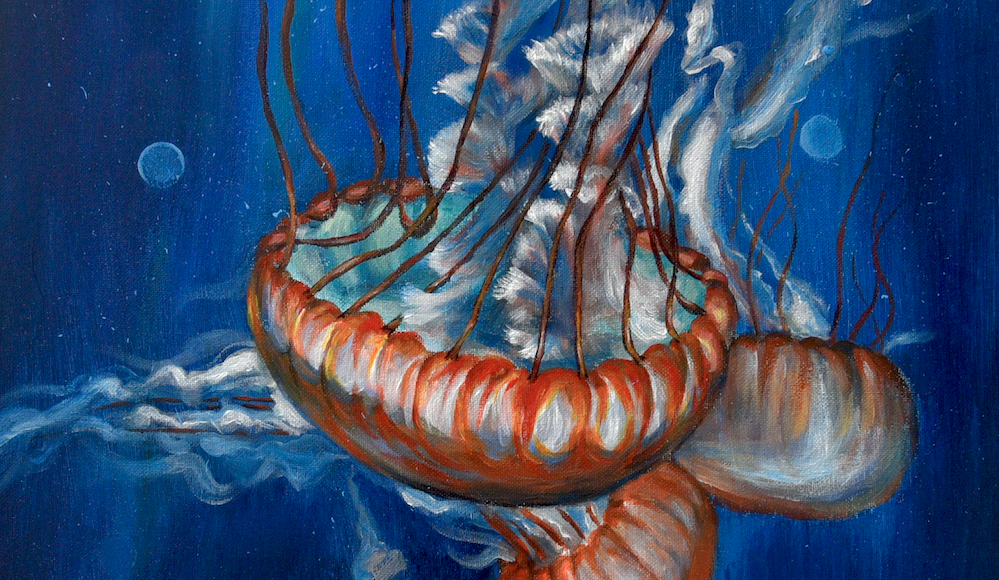Jellyfishes are like fly agarics (red mushroom), bright, tempting yet quite dangerous. Here let’s just focus on their free-swimming, elegant deep-water dancing for a moment. Painting the nettle jellyfish was completely out of plan, as I had been concentrated on the terrestrial animals, until one day I came across a stunning image of these nettle jellies online.
The pacific sea nettles, also known as west coast sea nettles, are commonly found in coastal waters of California and Oregon.
These jellies are carnivores, feeding on other jellies and a variety of zooplankton (including larval fishes and eggs). They catch their prey by means of nematocyst -laden tentacles that hang down in the water. The toxins in their nematocysts are effective against both their prey and humans, though it is typically nonlethal to the latter. Despite having a potent sting, nettle jellies are preyed on by sea turtles, to ocean sunfish, and the seabird Northern Fulmar.
Many scientists believe that urban runoff and global climate change is changing the nutrient composition and temperature of coastal waters, causing an increase in swarms of sea jellies. As more jellies consume more larval fishes, fewer fish survive to become adults.
Type: Acrylic painting on canvas
Size: 50cm (W) * 60cm (H)

